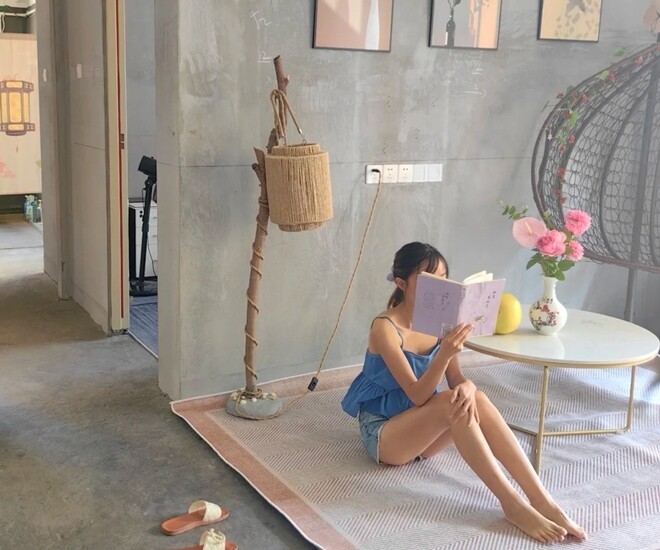The Rise of Unfurnished, Bare-Bones Homes: Exploring the Cost-Effective Trend
One of the primary reasons many people opt for unfurnished, bare-bones homes is a lack of funds for decoration and furnishings.
In today’s market, purchasing a home can be incredibly expensive, often costing billions of dong. Buying a home can deplete an entire family’s wealth, sometimes spanning multiple generations.
After spending a significant amount on the property itself, individuals often find they don’t have enough left over for decorations and furnishings. These additional costs can quickly add up, ranging from 100 million dong for basic furnishings to 200–300 million dong for a more comprehensive and comfortable setup.
As a result, many choose to move into their new homes without any decorations or furnishings, channeling their funds into other essential expenses.

– Time Efficiency
Another factor contributing to this trend is the time-consuming nature of interior construction and renovation. From the initial stages of receiving the house to completing the work, it can easily take two to three months. If proper ventilation and odor treatment are required, this timeline can extend to five or six months.
Additionally, the upkeep of interior furnishings can be costly and time-consuming. After a few years, renovations may be necessary due to wear and tear, which is why many individuals opt for a simpler approach, allowing them to move in immediately and make gradual improvements over time.

Creating a Functional Bare-Bones Home: Strategies for Success
Choosing to live in an unfurnished home does not mean moving into an unfinished space. Bare-bones homes are often dusty, lacking essential water and electrical systems, and generally unsuitable for immediate occupation.
However, with clever strategies, it is possible to transform these spaces into comfortable living quarters on a budget. With less than 100 million dong, you can make the necessary improvements to create a stable and pleasant living environment.
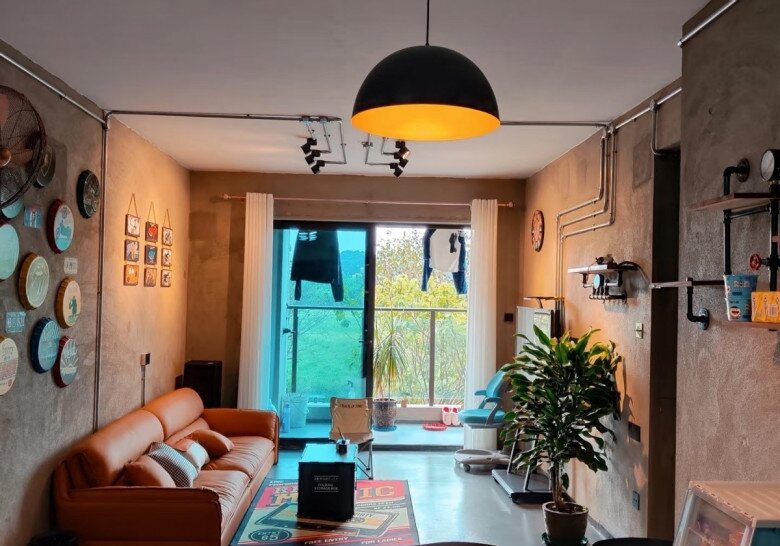
– Industrial-Style Living Room
As one of the most frequently used spaces, the living room is prone to dust accumulation and wall damage. To address this, consider embracing an industrial-style aesthetic, which involves retaining the raw concrete walls and floors without any additional finishing or painting.
If you’re concerned about dust, a premium concrete plaster can be applied to the walls. For added durability, a hardening layer can be applied to the floor. Alternatively, if the floor is already sufficiently hard, a simple polishing will suffice.
These wall and floor treatments are inexpensive, costing only a few hundred thousand dong. By purchasing second-hand furniture such as tables, chairs, and cabinets, you can create a stylish living room for less than 20 million dong.
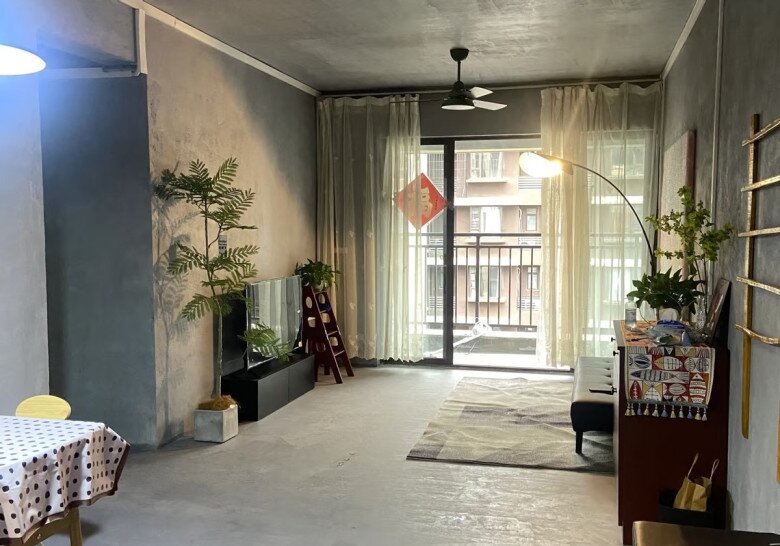
– Basic but Functional Kitchen
The kitchen is the second most important area to address when creating a liveable bare-bones home. Even with minimal cooking, a functional kitchen is essential for daily tasks like boiling water, reheating food, and preparing simple meals.
The basic requirements for the kitchen include a water supply and drainage system, which can be installed for as little as 700,000 to 1 million dong. To prevent dust accumulation and facilitate easier cleaning, it’s advisable to apply a hardening agent to the walls.
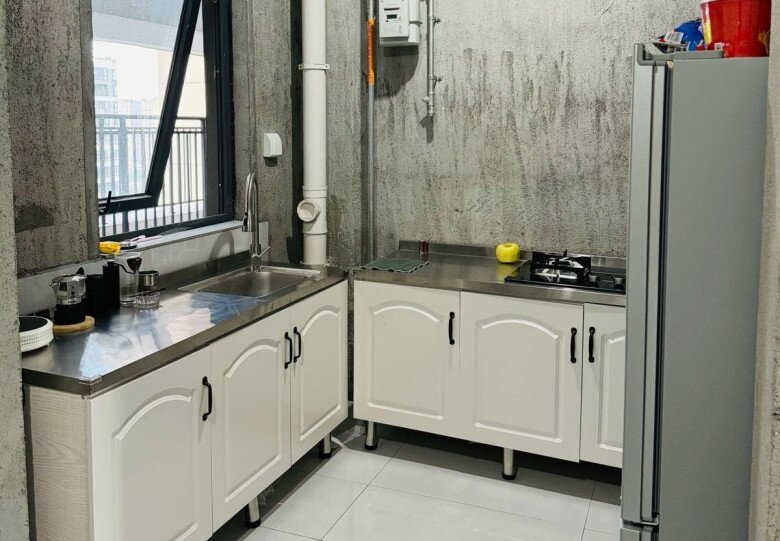
For the kitchen floor, you can opt for the same dust-resistant treatment as the walls, or choose to lay inexpensive tiles for a cleaner look. Next, head to the second-hand market to purchase essential equipment like a sink, extractor fan, gas or electric stove, and any other necessary items.
By prioritizing cost-effectiveness, you can create a fully functional kitchen for approximately 18–20 million dong, including basic improvements and equipment.
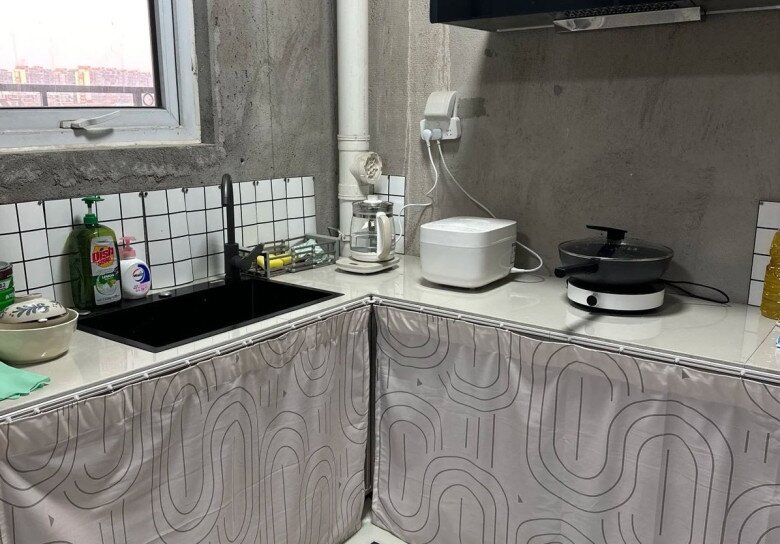
– Bathroom Renovation: Separating Dry and Wet Areas
The bathroom is an essential space in any home, and even in a bare-bones setting, it requires minimal improvements to be usable. Modern designs often incorporate a separation between dry and wet areas, which is a cost-effective strategy for renovating the bathroom.
Start by applying two to three layers of waterproofing to the walls and floors. This not only protects against water damage but also creates a simple aesthetic effect. Next, create a private shower area by installing a plastic or waterproof fabric curtain.
For the dry area, you can purchase a second-hand porcelain sink. Additionally, ensure that the water and electrical systems are in order, with proper water pipes, outlets, and floor drains in place.
The total cost of these basic improvements, including waterproofing, plumbing, electrical work, and second-hand fixtures, is approximately 18–20 million dong, providing a clean, functional, and comfortable bathroom.
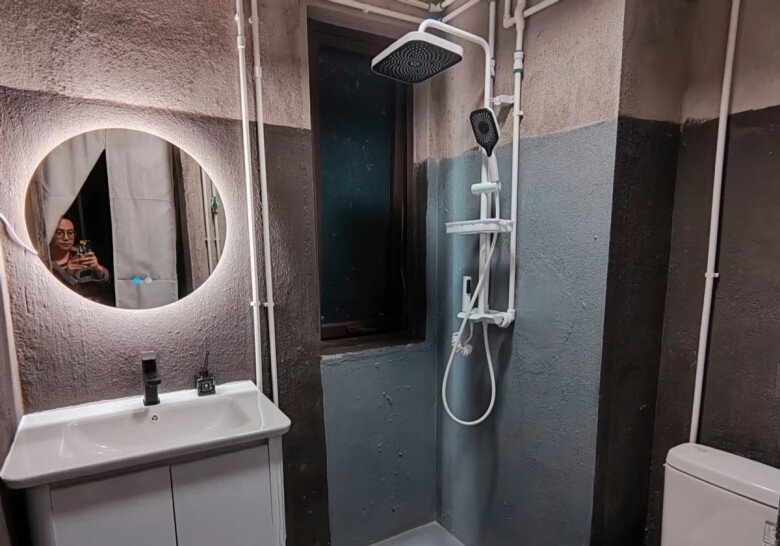
– Bedroom: Embracing the Natural, Cozy Atmosphere
The bedroom, being the space where we spend a significant portion of our time, should be a relaxing and comfortable sanctuary. In a bare-bones home, the bedroom can embrace a natural, raw aesthetic.
For the walls and ceiling, a simple coat of paint will suffice. If you prefer the look of raw concrete or plastered walls, no additional work is needed. However, it’s important to treat the walls and floors to prevent dust accumulation and create a cleaner environment.
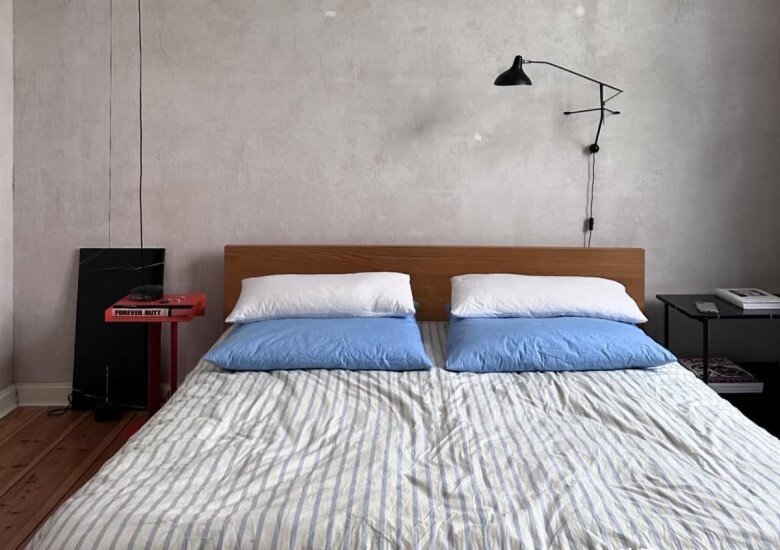
Applying a hardening agent to the bedroom floor will reduce dust and create a more durable surface over time. Second-hand furniture stores offer a great selection of affordable pieces, allowing you to create a cozy bedroom for around 18–20 million dong.
By implementing these strategies, you can transform all the functional areas of your home for a total cost of less than 100 million dong, making it a highly cost-effective approach.
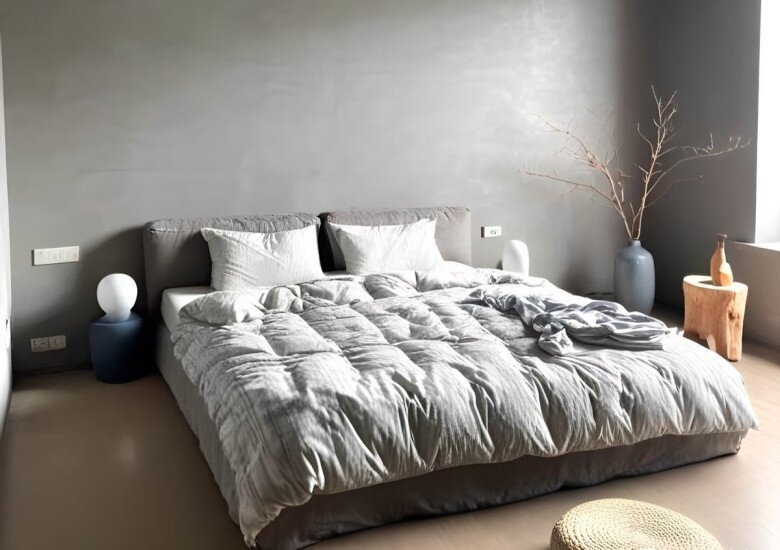
Essential Preparations for Moving into a Bare-Bones Home
When making the decision to move into a bare-bones home, it’s crucial to consider two key factors that will ensure a comfortable and safe living environment.
– Basic Electrical and Plumbing Systems
The first step is to renovate the electrical and plumbing systems, as the existing setups in bare-bones homes are often inadequate and impractical.
You’ll need to install water supply and drainage pipes for the kitchen and bathroom, as well as additional electrical outlets and light switches in each room. These improvements are relatively affordable, costing around 6–10 million dong to complete.

– Wall and Floor Treatments
The second critical aspect is treating the walls and floors to prevent dust accumulation and surface damage. Concrete walls and floors tend to attract dust and are prone to chipping, requiring frequent cleaning and maintenance.
You can address this by applying a coating or dust-resistant paint to the walls or, for a more refined finish, applying a smooth plaster layer. For the floors, a hardening chemical treatment will not only reduce dust but also increase durability over time.


























